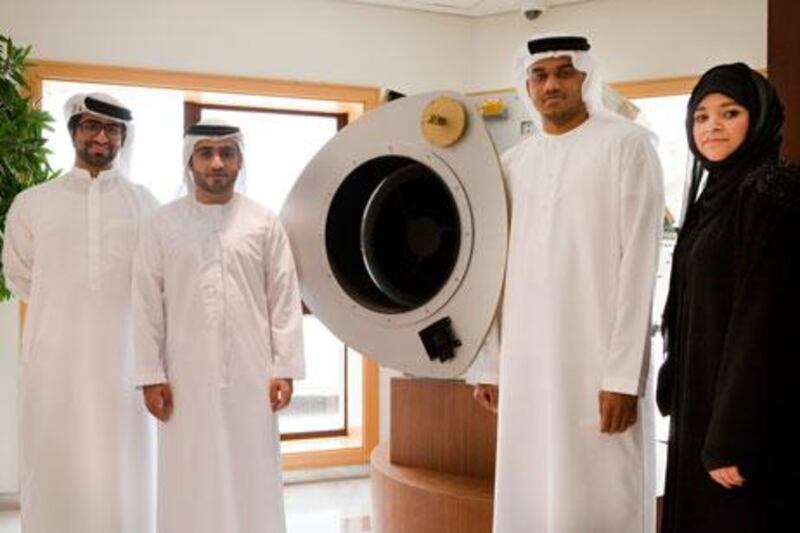DUBAI // Work on developing the UAE's newest satellite has begun before its predecessor has even left the launch pad.
Emirati engineers in South Korea have completed the first design phase for DubaiSat-3, the third in a series of Earth-imaging satellites.
The project will be transferred to Dubai in 18 months, when the manufacturing plant is built.
Meanwhile, DubaiSat-2, which was built in South Korea, is expected to be launched at the Yasny Cosmodrome in Russia at the end of the year, later than planned to fit in with the base's launch schedule.
DubaiSat-2 is complete - final testing was carried out in January, and it is in a container awaiting shipment to Russia. It will be blasted into space on a rocket along with satellites from other countries.
The programme is operated by the Emirates Institute for Advanced Science and Technology (EIAST), and the satellites are built in collaboration with the South Korean company Satrec Initiative (SI).
Emiratis were heavily involved in the creation of the first two, and they are assuming an even greater role in the development of DubaiSat-3. They are leading the project from the start, with SI acting as consultants.
"Work has begun on DubaiSat-3," said Salem Humaid Al Marri, assistant director general for scientific and technical affairs at EIAST. "We go through a certain process. We've completed our system design review - the first stage - and we're going on to our preliminary design review. We're formalising the design of the satellite.
"We're trying to reuse the technologies we developed jointly with the Koreans for DubaiSat-2 as much as possible so we reduce the development time.
"You don't want to keep developing new satellites because every time you develop one from scratch it takes five to six years."
DubaiSat-3, due to be launched in 2017, will be the first to be built in the UAE. The new manufacturing plant at EIAST's headquarters in Al Khawaneej will be kept free of dust and humidity that could contaminate the craft.
"Once we shift back to Dubai we'll start building the satellite here," Mr Al Marri said. "The design will have been completed in South Korea, as will the engineering and structural models."
EIAST was formed by the Dubai Government in 2006. DubaiSat-1 was launched three years later, and the images it provides are primarily used by UAE Government bodies.
Its successors will be able to produce much more detailed photos because of their improved imaging equipment.
Mr Al Marri revealed that EIAST was working on a long-term plan for its space programme.
"It can include anything: it can include manned space flight, it can include rovers on Mars … we're not limiting ourselves to anything," he said. "We're studying where we want to be in the next 10, 20, 30 years. That road map will give us a clearer idea of our goals.
"But right now we're concentrating on the next five years, on nationalising these technologies and bringing them back to the UAE.
"We haven't studied manned space flight so far, we haven't included things like Nasa are doing, because we're still at the early stage, which is developing Earth-observation satellites.
"We'll probably expand into different types of satellite and see where it takes us from there."
Talks are under way between EIAST and universities about plans to help students create their own satellite.
"This is still on the drawing board, but we want to develop a small satellite along with the universities," Mr Al Marri said.
"Students could study engineering and at the same time work on a satellite project.
"At the end, we would have a university satellite that has been developed by students that we can launch along with our satellites."






